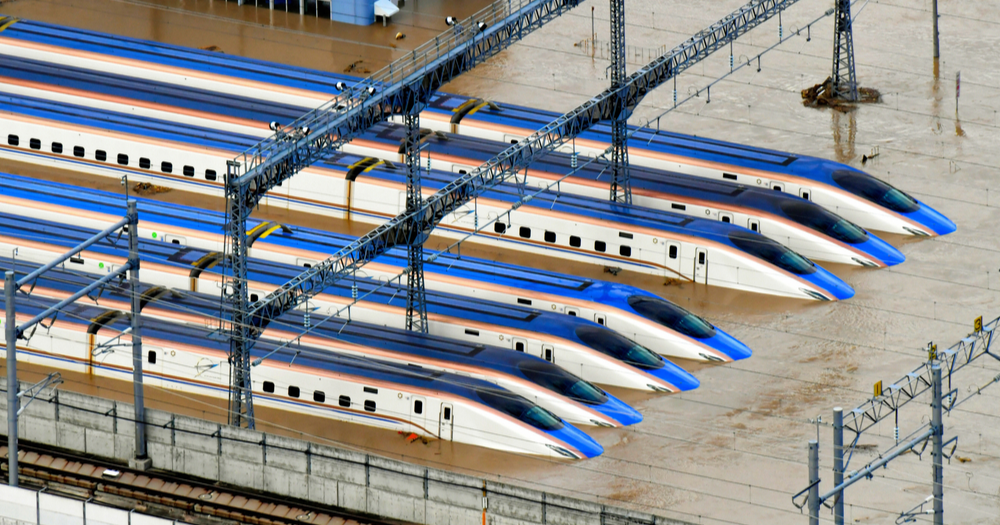Typhoon Hagibis, said to be the strongest typhoon to hit Japan since 1958, wreaked havoc on eastern and central Japan on Oct. 12, 2019.
The death toll has since increased to 74 and at least 12 still remain missing.
Not only were lives lost, but Japan's infrastructure and homes were also wrecked by the natural disaster.
10 trains with 120 carriages submerged in water
East Japan Railway Company (JR East) announced that a fleet of bullet trains in a train yard in the city of Nagano was damaged due to flooding from heavy rain associated with Typhoon Hagibis.
Photos and videos circulating on social media showed the extent of the flooding, with the trains clearly submerged in murky water.
Parts of Nagano prefecture hit especially hard by #TyphoonHagibis — including #shinkansen trains and rail lines #typhoonjapan
— Dr Martin Hiesboeck (@MHiesboeck) October 12, 2019
https://t.co/1PPC9m60Rf
【#台風19号】浸水した車両基地に並ぶ北陸新幹線の車両(13日午後1時過ぎ、長野市)=小高顕撮影 https://t.co/JAAjO4yMNv pic.twitter.com/KEVUnzRwcV
— 日経 写真映像ニュース (@nikkeiphoto) October 13, 2019
10 trains, consisting of 120 carriages in total, from the Hokuriku Shinkansen line were affected, reported Japan Times.
The Hokuriku Shinkansen line is jointly operated by East Japan Railway Company and West Japan Railway Company, and connects Tokyo with Kanazawa.
The 10 trains represented a third of the entire fleet of bullet trains on the line.
All 10 trains might have to be scrapped
Much of the train's vital functions such as brakes, transformers and air-conditioning systems are installed at the bottom of the train carriages.
Although these equipment are waterproof, experts revealed that it was uncertain if the trains would still be able to run smoothly, considering how long the carriages were submerged in water.
A spokesperson from a train parts manufacturer told Japan Times that "if water entered the equipment, it won't work anymore".
Furthermore, recovery of the fleet of trains would not be easy, as large-scale parts would need to be repaired or replaced due to the flooding.
The cost of manufacturing one Hokuriku Shinkansen train carriage is estimated to be around ¥300 million (S$3.7 million).
If all 10 bullet trains are scrapped completely, the damage could amount up to ¥30 billion (S$377 million).
It would reportedly still take one to two weeks for trains on the Hokuriku Shinkansen line to start operating again, with the remaining undamaged trains.
But due to the shortage of trains, the Shinkansen will only be able to operate at 50 to 60 per cent capacity, according to NHK News.
Top photo from The Asahi Shimbun / Getty Images
Content that keeps Mothership.sg going
❌?
Are young Singaporeans really lazy and pathetic?
??️
Do you agree that FOMO really isn't a thing?
??
Do yourself a favour and have a quickie please.
If you like what you read, follow us on Facebook, Instagram, Twitter and Telegram to get the latest updates.
